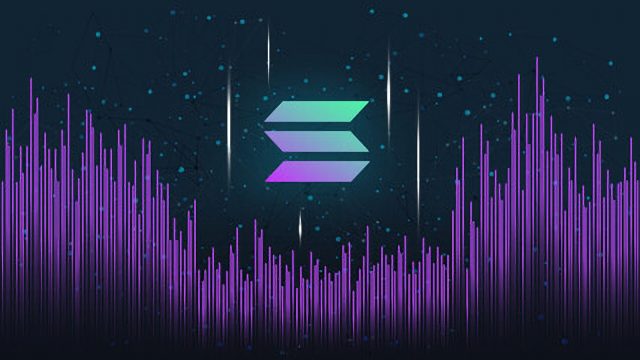Solana to Release 1 billion SOL
- Solana (SOL) worth nearly $1 billion will be available to be unlocked on Wednesday.
- This represents 13% of the coin’s circulating supply.
- This will be the second-largest token unlock of solana in terms of the number of coins being unstaked by validators.
In the world of cryptocurrency, there are many different protocols and blockchain platforms vying for supremacy. In this blog post, we’re going to take a look at one such protocol: Solana.
We’ll explore what Solana is, how it works, and some of its key features. By the end of this post, you should have a good understanding of what Solana is and how it works.
So without further ado, let’s get started!
What is Solana and How Does it Work?
Solana is a blockchain protocol that is designed to be scalable, fast, and secure. It was created by Solana Labs, a San Francisco-based startup.
The Solana protocol uses a novel consensus algorithm called Proof of History (PoH). PoH is a variation of Proof of Stake (PoS) that doesn’t require each block to be validated by every node in the network. Instead, each block is only validated by a few select nodes called “validators.”
This allows Solana to process transactions much faster than other protocols that use PoS or PoW consensus algorithms. Solana can handle up to 65,000 transactions per second (TPS). In comparison, Ethereum can handle around 20 TPS, and Bitcoin can handle around 7 TPS.
Solana also uses something called “gossip protocol” to ensure that all the nodes in the network have the same copy of the blockchain. This helps to prevent forks and other issues that can occur with distributed ledger technologies.
Solana is still a relatively new protocol. It was only launched in March 2020. However, it has already gained some traction in the cryptocurrency world. Solana is currently being used by a number of projects, including Serum, a decentralized exchange (DEX), and Chainlink, a decentralized Oracle network.
Key Features of Solana
Fast Transaction Processing
Solana is designed to process transactions at a very high speed, making it ideal for real-time applications requiring fast transaction processing. This is possible due to Solana’s innovative consensus algorithm, which allows the platform to scale horizontally while maintaining security and efficiency.
Scalability
Another key feature of Solana is its ability to scale. This means that as the network grows, it has the capacity to keep up with increasing demands for data processing and storage. This makes Solana a highly efficient and reliable platform for enterprises that are looking for ways to handle massive amounts of data in real time.
Security
Solana uses a number of security measures to make sure that its network is safe and reliable. Some of these features are the Proof of History consensus algorithm, which helps to establish trust in the nodes that are participating in the network, and the gossip protocol, which makes it easier for these nodes to communicate with each other.
Also, Solana uses encryption and incentive systems to keep data safe from people who shouldn’t have access to it and to stop malicious actors from messing with or disrupting the network.
Decentralized
As mentioned earlier, Solana is a decentralized protocol. This means that it allows anyone to participate in the network and contribute to its growth and development.
Unlike centralized protocols, which are controlled by a single entity, Solana is open and democratic, meaning that it is not subject to any one person or organization’s influence or control.
This makes it safer and more resistant to attacks or problems since the system can still function even if one or more nodes go offline.
Importance of Solana for the Future of Blockchain Technology
Solana’s innovative design makes it a good fit for large-scale applications like gaming, social media, and decentralized finance (DeFi).
Solana is also a good choice for businesses that want to use blockchain technology because it has fast transaction times and low fees.
As blockchain technology becomes more widely adopted, it will be important for protocols like Solana to scale so that they can meet the demands of their users. With its high TPS and low fees, Solana is well-positioned to become one of the leading protocols for large-scale applications.
How to Get Started With Solana
The first step in getting started with Solana is downloading the Solana software from their website. This can be done by following the link provided on their homepage and selecting your operating system from the list of options.
After you have downloaded and installed the software, you will need to create an account on the Solana network using your email address and a password of your choice.
Next, you will need to connect to one or more of the nodes that are part of the Solana network in order to start participating in transactions and contributing computing power toward processing them. You can access these nodes by joining one or more of their public chat rooms through the Solana software interface.
As soon as you join a node, you will be able to start using Solana’s suite of tools for interacting with blocks and validating transactions on the network. These include interfaces for creating new blocks, voting on existing ones, sending messages between nodes, and managing your account information, among others.
Ultimately, getting started with Solana is a fairly simple process that can be accomplished with just a few basic steps once you have downloaded and installed the software on your system. With time, it is possible to gain a deeper understanding of all of its features and capabilities so that you can take full advantage of everything that this innovative platform has to offer.
Final Words
Solana is an innovative platform that has the potential to transform the way we think about and use blockchain technology. Whether it can live up to this potential remains to be seen, but it is certainly an exciting project worth watching closely in the years ahead.
What are you waiting for? Check out Solana’s price and start buying SOL tokens today!










